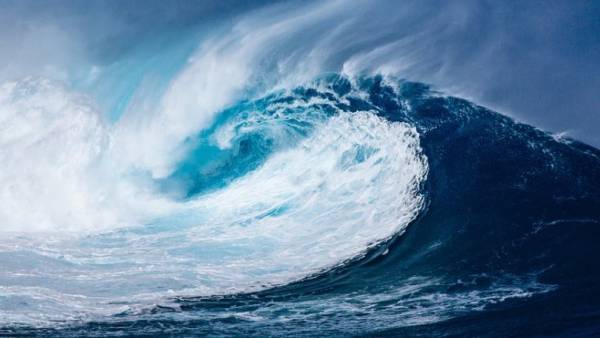Scientists have modeled a giant tsunami, after which the dinosaurs became extinct
MOSCOW, 9 Jan — RIA Novosti. A group of scientists from the USA have modeled the consequences of the catastrophic tsunami after the asteroid “Chicxulub” more than 65 million years ago, in which the dinosaurs became extinct, it is reported portal LiveScience.

The fall of an asteroid with a diameter of about 14 kilometers, and likely caused a tsunami with a height of almost 1.5 kilometers in the Gulf of Mexico that caused chaos in the oceans, according to a study. A giant tsunami was not the only consequence of the fall of the asteroid. It also called shock waves and the emission into the atmosphere huge quantities of hot rocks and dust, which caused forest fires and for a long time left the planet without sunlight.
 During the download an error has occurred.
During the download an error has occurred.
Scientists, on the basis that the asteroid fell in the shallow water in the Gulf of Mexico, has created a model that demonstrates what happened in the waters of the Bay within 10 minutes after the fall of the heavenly body, which formed a crater with a depth of about 1.5 kilometers. In the second model, the researchers showed how the tsunami spread across the globe. The simulation results demonstrated that the effects of the tsunami were felt around the world.
 During the download an error has occurred.
During the download an error has occurred.
So, in the Gulf of Mexico, the wave moved with a speed of 143 kilometers per hour during the first 24 hours of the tsunami covered the whole Atlantic. The first wave reached a height of nearly 1.5 km and in the South Pacific ocean and North Atlantic, the waves reached a height of 14 meters, the researchers note. In the North Pacific ocean their height is 4 m and in the Gulf of Mexico — 20 meters in some places and 100 meters in others.
News of the Eruption of mount Etna was shown from bird’s eye view (video)
of the Eruption of mount Etna was shown from bird’s eye view (video)
For comparison, the largest modern wave ever recorded in the southern hemisphere with a height of about 24 meters, notes LiveScience.
As told by one of the authors of the study, lead researcher of the University of Michigan (USA) Molly Range, this experiment is the first of its kind, when carried out global simulations of the tsunami caused by an asteroid impact.